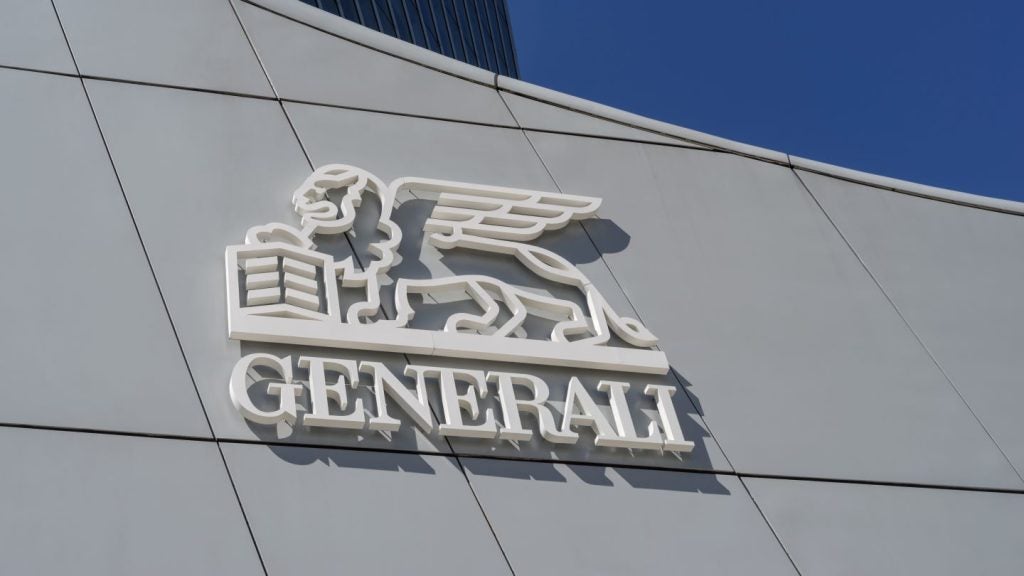
Insurers are increasingly focusing on blockchain initiatives -with activity and blockchain investment accelerating – because the technology provides a ‘single version of the truth’. Robin Arnfield explains
“The biggest case for blockchain adoption so far is in payments,” says Claudio Di Nella, managing director, technology strategy, financial services at Accenture Strategy.
Di Nella adds: “Insurance isn’t as far along compared to banking/capital markets, but that’s starting to change, particularly with industry consortia like the Blockchain Insurance Industry Initiative (B3i) and with reinsurers seeing opportunities to disintermediate brokers, before an outsider comes in and disrupts the entire industry.”
In October 2016, Aegon, Allianz, Munich Re, Swiss Re and Zurich launched B3i to explore distributed ledger technology’s potential to offer faster, more convenient and secure services and develop blockchain standards.
B3i currently has 15 members: Achmea, Aegon, Ageas, Allianz, Generali, Hannover Re, Liberty Mutual, Munich Re, RGA, SCOR, Sompo Japan Nipponkoa Insurance, SwissRe, Tokio Marine Holdings, XL Catlin, and Zurich Insurance Group.
In comparison to the banking industry whose main blockchain focus is frictionless commerce, Allianz Re blockchain expert, Oliver Volk, says the insurance industry is focusing on optimizing inefficient processes and using smart contracts.

US Tariffs are shifting - will you react or anticipate?
Don’t let policy changes catch you off guard. Stay proactive with real-time data and expert analysis.
By GlobalDataVolk says: “There are several insurance industry use cases and proof of concepts which are completed or are underway.”
He adds: “Blockchain’s main benefits include providing a ‘single version of the truth’. All parties work with one blockchain standard, and use the same ledger to directly capture all relevant data.
“Also, they can automate legal documents by translating them into smart contracts to reduce administrative workloads and eliminate manual reconciliations. They can create a virtual record to provide an unchangeable history, and use blockchain’s decentralized storage to protect data against fraud and cyber-attacks.”
Allianz is involved in stand-alone blockchain pilots, such as a smart contract-based natural catastrophe swap with Nephila Capital, and is a founder of B3i.
IoT and blockchain
A potential blockchain insurance use case is the Internet of Things (IoT).
Accenture’s Di Nella says: “Combining blockchain, smart contracts with IoT will mean smart cars/buildings/ships, etc. or fitness tracking devices combined with smart insurance policies that trigger themselves automatically and in real time when an external event happens.
“This will traverse the entire value chain with claimant, insurer and reinsurers all seeing a ‘single version of the truth’ simultaneously. The value that would unlock in terms of bringing straight-through-processing into insurance, reducing fraud whilst streamlining the industry value chain, is enormous”.
Di Nella adds: “Blockchain and smart contracts would provide a mechanism to significantly reduce fraud. There is the potential for blockchain to underpin a ‘fraud utility’ in healthcare and life insurance, for example, which could be used specifically as an anti-fraud mechanism.”
Will Trout, US-based consultancy Celent’s head of wealth management research, says the most interesting insurance blockchain work is taking place among start-ups.
Trout notes: “Everledger has created a blockchain-based marketplace for diamonds, using a digital ledger to provide proof of ownership and provenance for insurance claims. I see opportunities here quickly extending beyond establishing provenance (documenting the legitimacy of an object such as diamonds or art) and insurance into secondary markets for trading, swaps, etc.”
Claims processing
Tim Coates, principal consultant at Fintech firm Synechron, says blockchain’s automation and objectivity could be ideal for claims processing, particularly for low value, high-volume retail products such as phones and travel insurance.
Coates explains: “By leveraging smart contracts, insurance policy criteria could be assessed by trusted sources, and, if the claims meet the criteria, payment would be done automatically with a blockchain wallet. This allows the process to be timely and transparent, benefiting insurers, customers, asset providers, and regulators.
“Because blockchain creates an environment of trust, customers would enjoy timely, transparent claim assessment and service providers would benefit from their clients’ heightened trust and cost-savings by removing the human element and human error.”
Coates says Synechron has a blockchain accelerator for insurance claims processing to improve the claims process and coordinate separate parties involved in the process.
The Accelerator examines how blockchain could eliminate the need for customers to submit claims and insurers to administer claims.
“ Leveraging smart contracts and digital capabilities combined with IoT, the Accelerator would assist with asset provenance, reduce fraud, and create a streamlined, automated process for insurance claims processing for low-value, high-volume claims. We’re also actively working with insurers on custom application development projects across platforms ranging from re-insurance to supply chain/trade finance,” says Coates.
Accelerating insurance investment
Dave Nuernberg, US insurance FinTech Leader at EY, and Angus Champion de Crespigny, Americas Blockchain Leader at EY, tell LII: “Insurance industry blockchain investment has been low but is now accelerating.”
Nuernberg and Champion de Crespigny comment: “Blockchain technology has potential to bring value to the industry. Insurance can have very complex value chains, many of which have struggled to digitize for years. It can be easier to build new infrastructure when working from a clean slate than to replace legacy infrastructure that has taken decades and billions of dollars to establish.”
“Digital identity is a blockchain application that works with every sector, financial and otherwise,” say Nuernberg and Champion de Crespigny.
“The ability to prove the state of a set of data, e.g. someone’s attributes or reputation, at a certain point in time will be incredibly powerful. This is a complex challenge, but, once it is solved, users will be able to carry their validated digital identity with them across service providers, and become the custodians of their data rather than businesses.
“We’re seeing examples of this solution in health insurance around usage-based insurance and collecting health data from wearables. Insurers working with supply chains may be able to benefit from networks that are being built to establish standard supply chain records and pull in additional data for their risk models.”
Blockchain in practice: Great-West Life case study 1
David Hodge, executive vice-president and CIO, Canada at Great-West Life, explains: “Like other industries, we’re examining the opportunities and the risks associated with blockchain. Potential blockchain uses include the areas of secure electronic payments and the management of personal information for insurance purposes. These and other possibilities will continue to be explored and expanded as the technology advances.”
Hodge says Great-West Life has established an expert working group to oversee blockchain education, research and industry engagement. “This group is examining the possibilities and constraints of evolving blockchain technologies,” he says. “This approach positions us to be able to take advantage of new innovations in a safe and secure manner.”
IBM, AIG, Standard Chartered Bank case study 2
In June 2017, AIG and Standard Chartered Bank completed a pilot of the first multinational, blockchain smart contract-based insurance policy.
The pilot’s technology was built by IBM and based on Hyperledger Fabric, a blockchain framework which is hosted by The Linux Foundation.
AIG, Standard Chartered and IBM converted a multinational, controlled master policy written in the UK, and three local policies in the US, Singapore and Kenya, into a smart contract that provides a shared view of policy data and documentation in real-time.
“These multinational policies are very complex,” says Mark McLaughlin, IBM’s global insurance director. “You must ensure policy coverages and regulatory compliances line up across the appropriate countries, which is a very involved process. A lot of paper travels between different countries as Country A checks that Country B has signed off on Provision X.
“Blockchain provides a common ledger across all the entities participating in a transaction so that everyone can see all along the line what is happening. It radically speeds up the process as there is a common view across not just the customer and participating insurance entities but also any regulators that get involved in the process.”
What is blockchain?
Blockchain is a public distributed ledger which can be securely shared among multiple participants. Individual records, known as blocks, contain a timestamp and are managed on a peer-to-peer network.
It provides a single view of truth across all network participants while simultaneously providing selective visibility to participants based on their credentials.
A multinational insurance policy written on the blockchain provides the ability to record and track events and associated payments in each country related to the insurance policy.
No single party can modify, delete or append any record without consensus from others on the network. This level of transparency helps reduce fraud and errors, as well as the need for the parties to contact each other to view policy and payment data and the status of policies
Source: AIG, IBM, Standard Chartered Bank.







